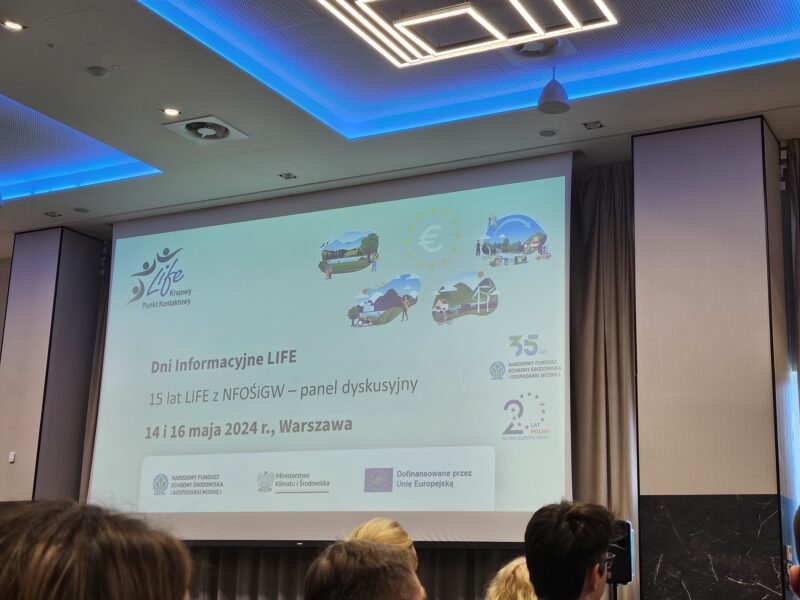
On 16 May 2024, the CAKE Team participated in the LIFE Information Days in Warsaw organised by NFOŚIGW and the LIFE National Contact Point.
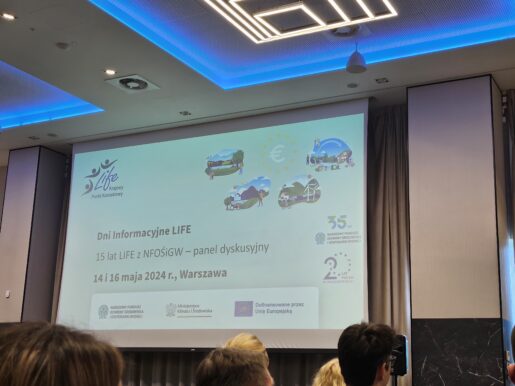 During the Information Days, the CAKE Team actively presented both the work and results of the LIFE VIIEW 2050 project on “Assessing the long-term impact of the European Emissions Trading Scheme (EU ETS) on a zero-carbon economy by 2050”. LIFE VIIEW 2050″ (LIFE 19GIC/PL/001205) and bring participants closer to information about its objectives and the results produced.
During the Information Days, the CAKE Team actively presented both the work and results of the LIFE VIIEW 2050 project on “Assessing the long-term impact of the European Emissions Trading Scheme (EU ETS) on a zero-carbon economy by 2050”. LIFE VIIEW 2050″ (LIFE 19GIC/PL/001205) and bring participants closer to information about its objectives and the results produced.
At our stand of the Centre for Climate and Energy Analysis (CAKE), representatives of the CAKE Team had the opportunity to tell interested participants of the LIFE Days about the history of our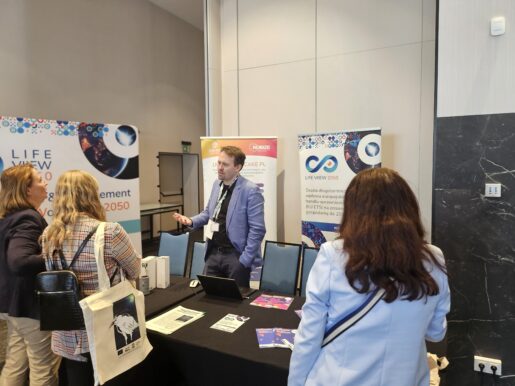 activities under the LIFE Programme, i.e. the already completed LIFE Climate CAKE PL and the currently ongoing and implemented LIFE VIIEW2050 project, as well as about future new projects.
activities under the LIFE Programme, i.e. the already completed LIFE Climate CAKE PL and the currently ongoing and implemented LIFE VIIEW2050 project, as well as about future new projects.
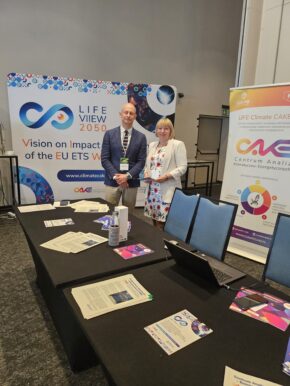 We would like to sincerely express our gratitude to Mr Krzysztof Bolesta, Secretary of State at the Ministry of Climate and Environment, for appreciating our work within the framework of the ongoing LIFE projects.
We would like to sincerely express our gratitude to Mr Krzysztof Bolesta, Secretary of State at the Ministry of Climate and Environment, for appreciating our work within the framework of the ongoing LIFE projects.
At the same time, participation in the LIFE Days allowed us to get acquainted with the new perspective and with the experiences of other projects and to establish networking contacts with other beneficiaries of the LIFE programme, i.e. LIFE After COAL PL, for example.
Thank you very much for the invitation, excellent organisation and care of the National Fund for Environemntal Protection and Water Resources (NFOŚiGW) and the LIFE National Contact Point during the next LIFE Information Day!
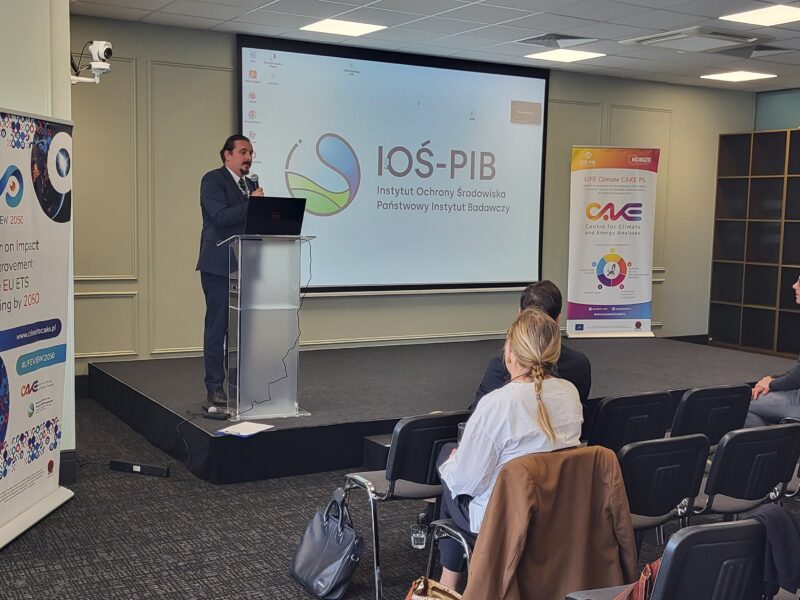
On May 16, 2024, Centre for Climate and Energy Analysis (CAKE/KOBIZE/IOŚ-PIB) had the pleasure of hosting the European Climate and Energy Modelling Forum (ECEMF) Workshop in Poland.
The meeting took place in Warsaw and was an excellent opportunty to present Polish perspective on energy and climate policy and the modelling results from ECEMF project to decision makers and other stakeholders in Poland.
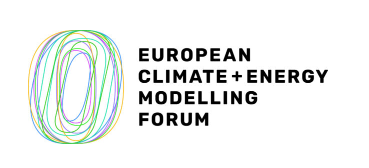
 The meeting was opened by Robert Jeszke, Head of CAKE, and Will Usher, ECEMF project leader. During the meeting there were several presentations made:
The meeting was opened by Robert Jeszke, Head of CAKE, and Will Usher, ECEMF project leader. During the meeting there were several presentations made:
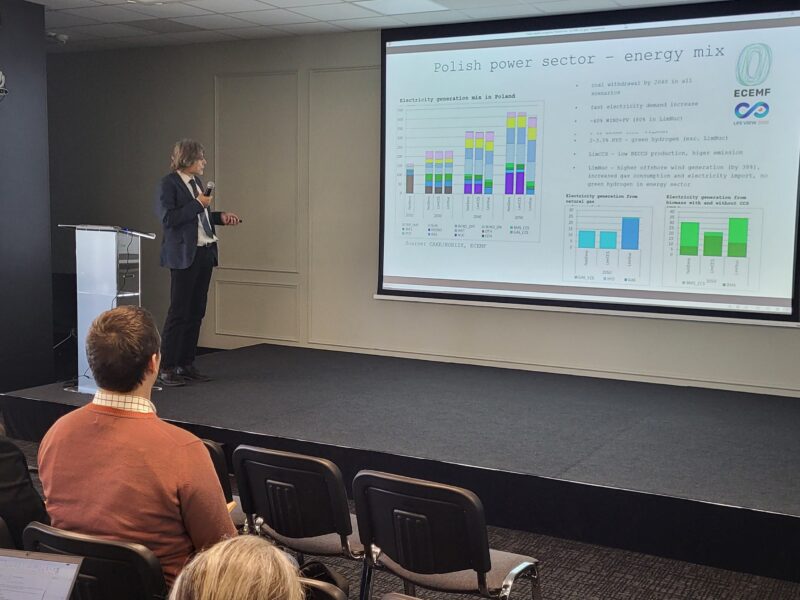
The last part was the workshop on how to use ECEMF tool Futuresight lead by William Usher.
You can find more on the ECEMF project: https://www.ecemf.eu/
Thank you all the participants for fruitful and inspiring discussion.

On the 14th and 15th of May 2024 Centrum Analiz Klimatyczno-Energetycznych (CAKE) / Centre for Climate and Energy Analysis / IOŚ-PIB host in Warsaw, Poland the 5th Consortium Meeting of the European Climate and Energy Modelling Forum (ECEMF).
There was a great occasion to fullfill, discuss & exchange not only the tasks we have in the ECEMF project, but also the problems we need to resolve. There were many important issues undertaken at the meeting such as modelling results, IT infrastructure, dissemination, communication & legacy.

The aim of ECEMF is to provide the knowledge to inform the development of future energy and climate policies at national and European levels. ECEMF’s programme of events and novel IT-based communications channel enables researchers to identify and co-develop the most pressing policy-relevant research questions with a range of stakeholders to meet ambitious European energy & climate policy goals, in particular theEuropeanGreenDeal and the transformation to a climate neutral society.
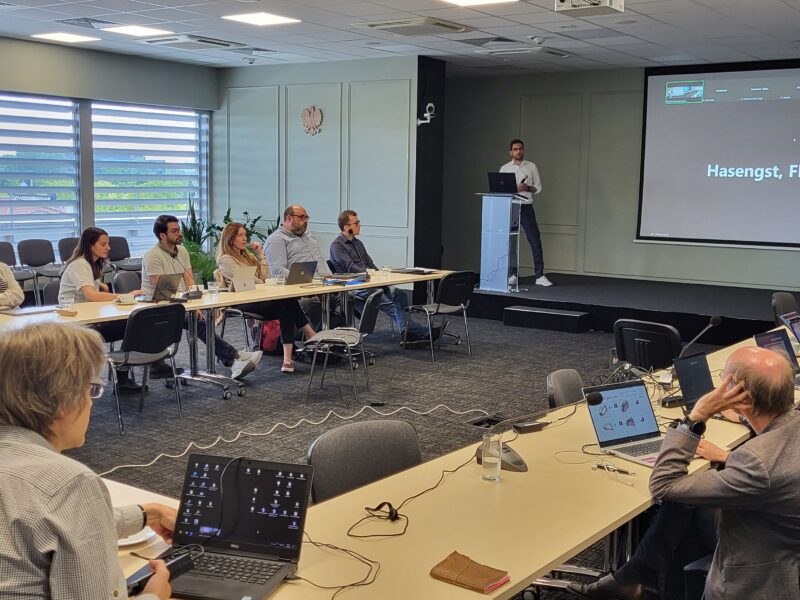
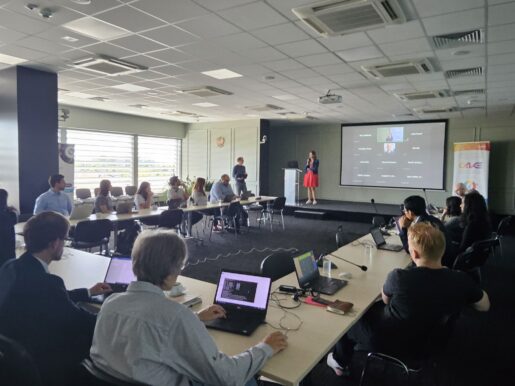

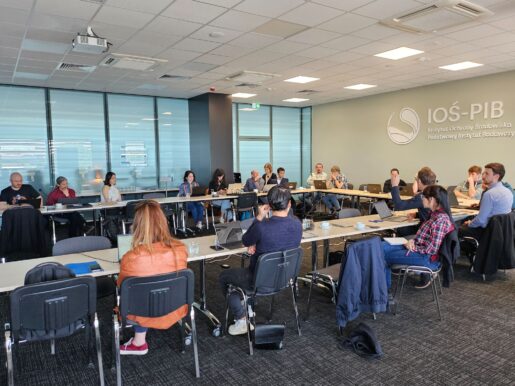


ECEMF has received funding from the EU’s Horizon 2020 research and innovation program under the grant Agreement No 101022622.
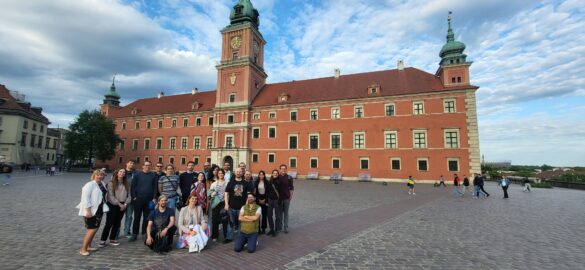

On April 23rd, 2024 Robert Jeszke, CEO of CAKE took part in the conference “EU ETS: Carbon Dioxide Removals CDRs – Public Event” organized by the The European Roundtable on Climate Change and Sustainable Transition (ERCST).
This conference focused and tried to explore the role of negative emissions and carbon removal technologies within the EU ETS framework and discuss the potential constraints that could shape their integration, assuming that CdR works from a technological point of view.
During the meetin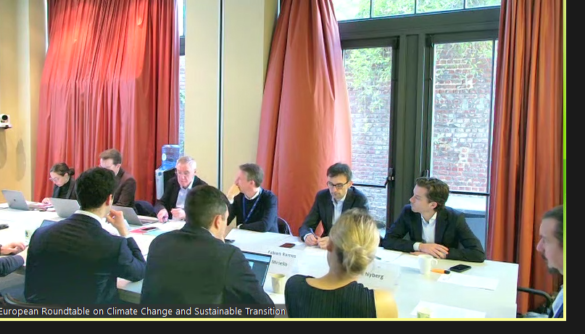 g Robert Jeszke took part in the disussion and presented some of the the results of the latest LIFE VIIEW 2050 analysis in this area. The exchange of insights and perspectives on integrating carbon removals into the EU ETS and exploring various integration models was truly enriching. The disussion focused on the relevant issues and/or benefits of the integration of carbon removals in the EU ETS (I panel) and on the the possible models for the integration of carbon removals into the EU ETS (II panel).
g Robert Jeszke took part in the disussion and presented some of the the results of the latest LIFE VIIEW 2050 analysis in this area. The exchange of insights and perspectives on integrating carbon removals into the EU ETS and exploring various integration models was truly enriching. The disussion focused on the relevant issues and/or benefits of the integration of carbon removals in the EU ETS (I panel) and on the the possible models for the integration of carbon removals into the EU ETS (II panel).
Below the are interesting insights by Robert Jeszke, CEO of CAKE:
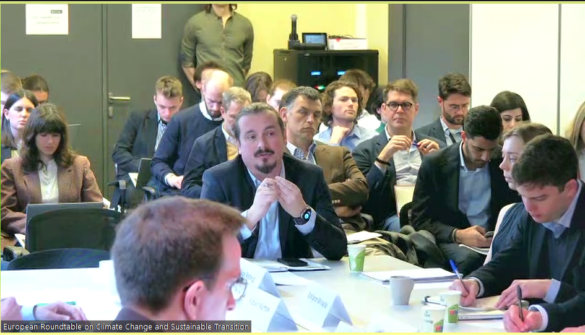 “There is rather no issue with merging removals with EU ETS and ETS2. The question is how we can integrate it. The driver of removals is ETS and CO2 prices. We need to maintain the competitiveness of the EU economy. Providing more subsidies to removals means avoiding high CO2 costs. These are three main issues in integration of CDR’s. Our recent analysis shows the macroeconomic and CO2 price impact of introducing removals. We need to consider how to combine the whole ETS architecture after 2030. EU ETS will stop issue EUA’s in 2040. The “problematic” sector is agriculture due to very high abatement costs & production losses. Inclusion of removals into EU ETS and safeguard of the EU economy is crucial in the context of high emission costs and carbonleakage issue. We need European Central Carbon Bank (ECCB) as a safety mechanism to ensure liquidity and stability in EU ETS and CO2 market, and also to ensure smooth timeline removals integration. ECCB could deliver it.”
“There is rather no issue with merging removals with EU ETS and ETS2. The question is how we can integrate it. The driver of removals is ETS and CO2 prices. We need to maintain the competitiveness of the EU economy. Providing more subsidies to removals means avoiding high CO2 costs. These are three main issues in integration of CDR’s. Our recent analysis shows the macroeconomic and CO2 price impact of introducing removals. We need to consider how to combine the whole ETS architecture after 2030. EU ETS will stop issue EUA’s in 2040. The “problematic” sector is agriculture due to very high abatement costs & production losses. Inclusion of removals into EU ETS and safeguard of the EU economy is crucial in the context of high emission costs and carbonleakage issue. We need European Central Carbon Bank (ECCB) as a safety mechanism to ensure liquidity and stability in EU ETS and CO2 market, and also to ensure smooth timeline removals integration. ECCB could deliver it.”
Thank you for the invitation Andrei Marcu (ERCST – European Roundtable on Climate Change and Sustainable Transition) and chance to contribute to such an important dialogue alongside esteemed colleagues and experts in the field: Ruben Vermeeren (European Commission), Fabien Ramos (EU Environment and Climate), Eadbhard Pernot (Zero Emissions Platform), Lewis Rodger (Drax Group), Stefano Miriello, Carbon Capture and Storage Association, Svea Nyberg, (IETA), Winston Beck (Heidelberg Materials), Artur Runge – Metzger (Mercator Research Institute on Global Commons and Climate Change (MCC) gGmbH), Liv Rathe (Norsk Hydro); Ingo Ramming (BBVA), Michael Pahle (PIK – Potsdam Institute for Climate Impact Research), Verena Hofbauer (Carbon Gap).
The recording of the meeting is on the ERCST’s website: https://ercst.org/event/the-future-of-the-eu-ets-cdrs-public-event/
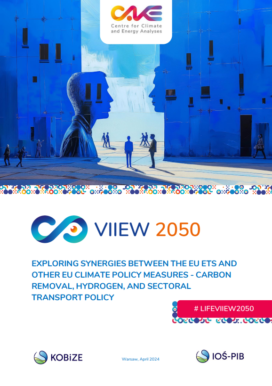
We invite you look into the recent LIFE VIIEW 2050 report:
Summary & policy recommendations
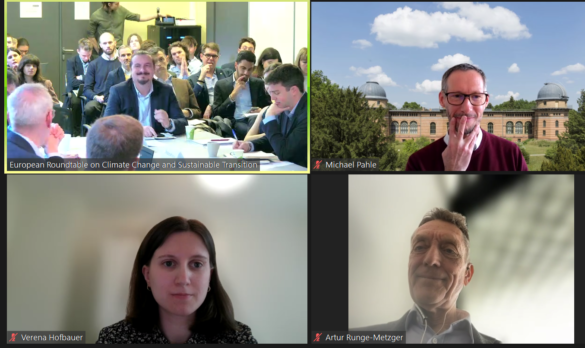

We are pleased to present the latest CAKE/KOBiZE analysis „VIIEW on EU ETS 2050: Exploring synergies between the EU ETS and other EU climate policy measures – carbon removal, hydrogen, and sectoral transport policy”.
 VIIEW on EU ETS 2050: Exploring synergies between the EU ETS and other EU climate policy measures - carbon removal, hydrogen, and sectoral transport policy (3.3 MiB, 535 hits)
VIIEW on EU ETS 2050: Exploring synergies between the EU ETS and other EU climate policy measures - carbon removal, hydrogen, and sectoral transport policy (3.3 MiB, 535 hits)
 Summary & Policy Recommendations (1.1 MiB, 355 hits)
Summary & Policy Recommendations (1.1 MiB, 355 hits)
The EU is currently aiming for a 55% reduction in domestic greenhouse gas emissions by 2030 and net zero emissions by 2050. These targets, set in December 2020 and 2019 respectively, are enshrined in the EU climate legislation. The ‘Fit for 55’ legislative package, part of the European Green Deal, includes measures such as the EU ETS Directive and the Effort Sharing Regulation (ESR) to achieve these targets. Other initiatives focus on specific sectors and gases. However, according to the EC’s in recent years, the progress made by Member States has been substantially below what is necessary to achieve the EU’s medium and long-term climate goals in the coming decades. The European Commission’s new proposal for a 2040 climate target, published in February 2024, is based on the European Climate Law. The EU agreed to set “an EU-wide climate target for 2040” on the basis of a Commission proposal to be presented by June 2024 at the latest. Looking beyond 2030, detailed guidance is needed to effectively steer the EU towards climate neutrality and to avoid decisions that could lock in high emissions and high costs. Long-term strategies are crucial given the lead time needed for investments in energy infrastructure and industry.
New elements in the political debate on the future of EU climate and energy policy, such as carbon dioxide removal (CDR) and green hydrogen, transport policy and the inclusion of some sectors in the EU ETS, will be the most important elements in the emission reduction pathways for 2050. The decision-making process would have a significant impact and consequence on the whole EU economy and development strategies.
The main goal of this analysis is the identification of current and potential future instruments which could affect the functioning of the EU ETS and non-ETS sectors post 2030. We are focusing on the following key areas:
In this analysis we examine the impact of above elements on the:
Here are expanded and detailed policy recommendations:
Revised Targets: Given the discrepancies between current projections and the European Commission’s ambitious targets for 2040, a comprehensive reevaluation is necessary. This reassessment should consider the maturity and scalability of emerging technologies like e-fuels and direct air capture and storage (DACCS). It should also factor in the realistic rates of technology adoption and diffusion. In this context, to ensure economically acceptable realization of climate policy, the following actions may be necessary:
Enhanced Support for Carbon Removal Technologies: There is a critical need to integrate carbon removal technologies more effectively into the EU’s climate strategy, especially in sectors where emission reductions are challenging. A strategic plan should be developed to:
Implementation of ETS for Other Sectors: The expansion of the ETS to include sectors currently exempt, such as certain agricultural and waste operations, requires a strategic approach:
Establishment of a European Carbon Central Bank (ECCB): To ensure coherent market operations and to manage risks effectively, the establishment of an ECCB is recommended. This institution would:
Support for Green Hydrogen Production: As the EU looks to reduce its carbon footprint, supporting green hydrogen production is essential, particularly through:
Balanced Subsidies and Emission Standards in Transport: Achieving emission reductions in the transport sector requires a balanced approach:
Careful Design of GHG Removal Subsidies in Agriculture: Given the unique challenges in agriculture, subsidies designed for GHG removal must:
Market Stabilization Measures for Agriculture: To support the transition to carbon neutrality in agriculture:
Comprehensive Dialogue and Stakeholder Engagement: To ensure that the transition to a sustainable economy is both equitable and effective: